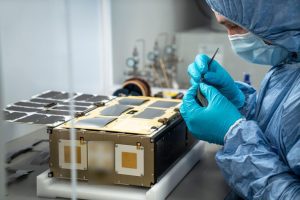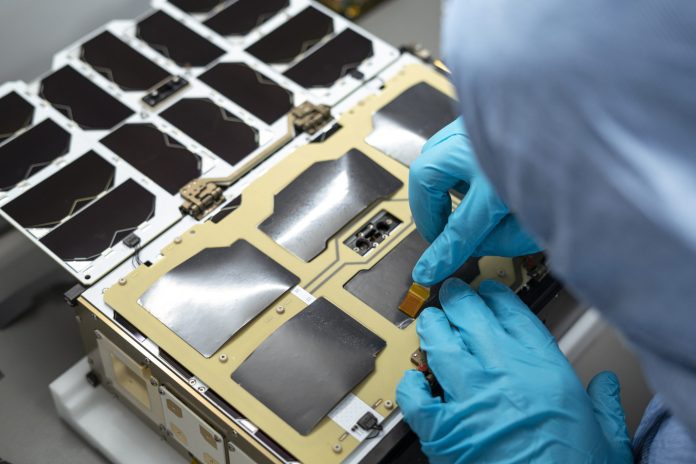A start-up based in Luxembourg is exploring the use of low-earth-orbit satellites for narrowband IoT connectivity and in the process of launching nanosatellites that will support commercial service.
Omar Qaise, founder and CEO of OQ Technology, explained that currently, once a device leaves NB-IoT cellular network coverage, far more expensive satellite support is required in order to maintain connectivity. “There’s a huge gap” in the cost between inexpensive NB-IoT support and satellite support, and that gap is where OQ sees an opportunity for a LEO-based NB-IoT (and eventually, 5G) network. “Imagine making that cellular chip of $5 do the same thing that satellite chip does,” he says, adding that, for instance, it will reduce total cost of ownership by allowing companies that want global IoT visibility to deploy only one system instead of a cellular system and a satellite system.

OQ has already proved out that NB-IoT uplink and downlink can be supported via a LEO satellite. The company has been working on its tech since 2016 and in 2019, launched its first satellite to test NB-IoT (Rel. 13) functionality. Qaise notes that the particular challenge for using NB-IoT in a LEO environment is due to the high Doppler and delay environment; OQ has put much of its effort into solving the related synchronization issues and in developing software for a software-defined radio in the satellite that, as Qaise puts it, will essentially “re-create the cell tower in the satellite itself.”
OQ recently signed a contract with NanoAvionics to build, integrate and operate a 6U nanosatellite for its Tiger-2 mission to begin commercial service later this year, offering “basic commercial IoT” services in areas including Africa, the Middle East, Asia and Latin America. The company plans to target the cellular IoT communication market and the oil and gas, maritime, Industry 4.0 and transportation segments, for management and asset tracking in remote areas.
In February of this year, OQ signed a 2 million Euro contract with the European Space Agency, as part of the Luxembourg National Space program, in support of its space-based IoT goals. The contract with NanoAvionics for OQ’s Tiger-2 million was announced earlier this month. OQ also recently signed a strategic partnership with Neo Things IoT to target agricultural IoT in Brazil.
The Tiger-2 mission will have two payloads: One to support low-frequency IoT service, and a secondary payload that will “demonstrate the feasibility of using high frequencies for 5G IoT radio links.”
Qaise says that OQ expects to launch the satellite in June, followed by additional missions to add half a dozen additional nanosatellites. He estimates that for latency-tolerant applications where devices only need to check in once or a few times a day, between 3-9 satellites is enough to support that level of service; OQ foresees an eventual constellation of more than 60 LEO satellites for more intensive IoT support.
The company says that it does expect to generate revenue with the satellite, and Qaise says that OQ plans to go to market in an arrangement much like a wholesale provider, working with service providers who want to offer such service with their products. He says the company already is in multiple conversations, formal and informal, with mobile network operators who are interested in the company’s development and testing and whether it will meet their specific requirements.
“Some telcos … are so busy with 5G NR, and they don’t want to miss out on the IoT market, but they are looking for that provider that can come in with a full solution. They don’t want to build everything from scratch,” he says. “So there is a lot of opportunity.”
“For many years and decades, satellite and mobile have been two different worlds,” he continues, noting that satellite has often only been considered as backhaul to remote cellular sites, and seen as expensive. Meanwhile, cellular networks are geographically limited and have only as much reach as any given provider can build out, plus its roaming relationships. “We are bringing both technologies, both worlds together — both markets together. And we are allowing every other country to have the benefit … without waiting for the infrastructure to be ready.”

